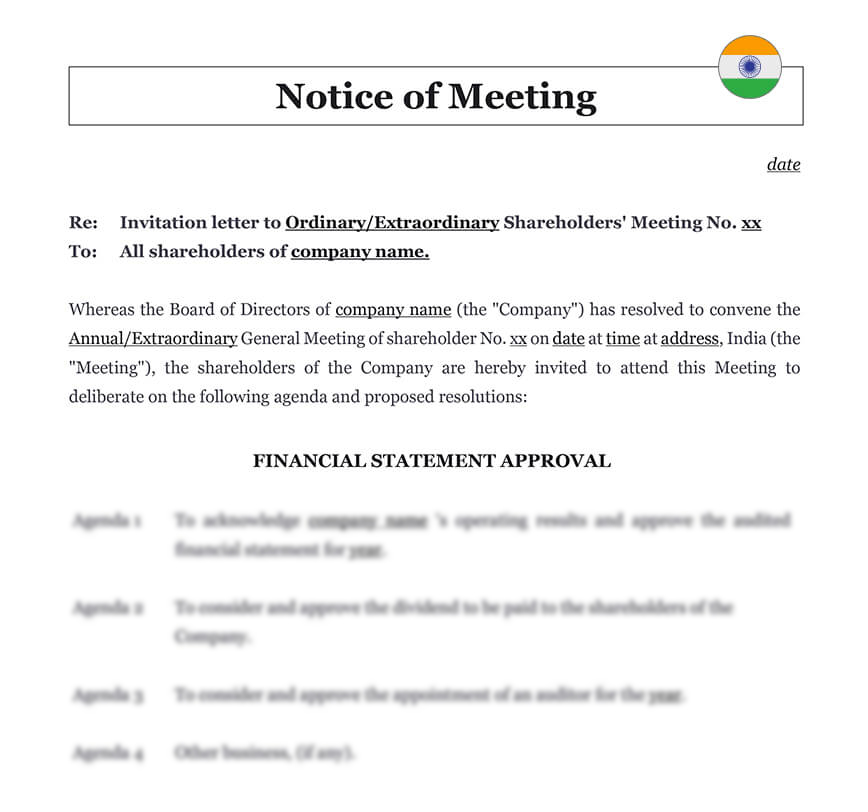Ready to use legal template
Drafted by experienced lawyers
Compliant with Indian law
Ready to use legal template
Drafted by lawyers
Compliant with Indian law
Home › Business contracts › Notice of meeting
Learn more about Notice of Meeting in India
The purpose of a Meeting Notice is to notify company members about the business that will be conducted at the meeting. A company’s general meeting must adhere to the standards outlined in the Company Act and other Indian legislation. Failure to do so may result in severe penalties. The meeting notification can be issued to the partners through registered mail with acknowledgement of receipt 21 days or 14 days before the meeting. You may acquire a model of notice of meeting from Themis Partner in order to start with your general meeting. Furthermore, our partner lawyers are available to assist you with this procedure if necessary. Use this meeting notice prior to an ordinary or extraordinary meeting to advise shareholders and directors of the meeting’s date, time, and location, as well as the broad nature of the business to be transacted.
Table of contents
When should a Notice of Meeting be sent?
All shareholders must be given a clear 21-day notice in writing or via electronic means. In the event of a section 8 corporation, 14 days’ clear notice is necessary rather than 21 days. ‘Clear days’ are days other than the day of the notice of service and the day of the meeting. If a notice of general meeting is delivered by post, it is presumed to be served 48 hours after the letter containing the same is sent. Every one of the 21 days must be full or complete. The day on which the notice is regarded to have been served on the member, as well as the day of the general meeting, must be added to the 21-day period.
What is included in the Notice of Meeting Letter?
The goal of the Extraordinary General Meeting (EGM) notice is to notify company members about the business that will be conducted at the meeting. As a result, the notification should include the following details:
| ➤ The location of the EGM |
| ➤ The EGM's date and hour |
| ➤ Who called the EGM? EGMs can be called by the board of directors, either on its own initiative or on the request of members of the company who own at least 10% of the total number of paid-up voting shares, or by two or more members of the company who own at least 10% of the overall number of issued shares (excluding treasury shares) |
| ➤ The broad scope of the business issues to be covered during the conference. It is critical that enough information be provided so that members may make educated decisions about whether to attend the meeting and vote for or against any suggested resolutions. - Instructions for company members who wish to designate proxies to represent and vote on their own |
| ➤ Instructions for corporations that are company members to appoint representatives to act on their behalf |




